Introduction: Welcoming Spring with Flowering Shrubs
As the frost fades and the earth begins to thaw, nothing heralds the arrival of spring quite like the vibrant blooms of flowering shrubs. As nature awakens, early spring blooms breathe life into gardens, offering a visual feast and much-needed nectar for pollinators. In this guide, we'll help you select and care for the perfect flowering shrubs to adorn your garden path, drawing beauty and biodiversity into your outdoor space.

The Importance of Early Blooming Shrubs
Aesthetic Appeal
The stark beauty of flowering shrubs in early spring is incomparable. These plants bridge the gap between winter and summer gardens, adding color and texture when most other garden plants remain dormant. They set the visual tone for the rest of the growing season, providing a canvas upon which you can build the rest of your garden tapestry.
Ecosystem Support
Flowering shrubs serve as crucial resources for early-season pollen collectors. Bees, butterflies, and other pollinators rely on these initial blooms for nourishment after a long winter. By incorporating flowering shrubs into your spring landscape, you support these vital creatures and, by extension, the overall health of your garden ecosystem.
Top Flowering Shrubs for Early Spring
Forsythia
Known for its bright yellow flowers, Forsythia is a classic choice for early spring gardens. Its vibrant blooms often appear before the foliage, creating a striking display. Forsythia is both hardy and low-maintenance, making it a favorite among beginner and experienced gardeners alike.
Camellia
Camellias are cherished for their lush, rose-like blooms in shades of pink, red, and white. With a long flowering season that starts as early as February in mild climates, Camellias provide a stylish burst of color. They thrive in slightly acidic, well-drained soil, and partial shade enhances their visual appeal and longevity.

Daphne
Renowned for their intoxicating fragrance, Daphnes produce clusters of pink or white flowers in late winter to early spring. These shrubs are perfect for planting near paths or doorways where their scent can be fully appreciated. Although they require some care in ensuring proper drainage, the reward is well worth the effort.
Winter Jasmine
With its graceful, arching branches and cheerful yellow blooms, Winter Jasmine is one of the first shrubs to flower in early spring. Ideal for cascading over a wall or trained on a trellis, this hardy plant is adaptable and drought-resistant once established.
Caring for Early Blooming Shrubs
Soil and Watering Needs
To ensure your flowering shrubs thrive, it's essential to plant them in the right soil and provide adequate water. Most prefer well-drained soil enriched with organic matter. During dry spells, particularly in their first year, supplemental watering may be necessary to support healthy growth and abundant blooming.
Pruning Tips
Regular pruning is crucial for maintaining the shape and health of flowering shrubs. It encourages new growth and can improve flower production. Prune immediately after flowering to avoid cutting off next year's buds, focusing on removing dead or weak branches and shaping the shrub to your liking.

Pest and Disease Management
Early spring is an excellent time to get ahead of potential pest and disease issues. Keep an eye out for signs such as discolored leaves or stalled growth. Using organic pest control methods and ensuring good air circulation around your shrubs can help prevent problems before they start.
Plantology Favorites: Enhance Your Garden with These Varieties
At Plantology, we take pride in offering a curated selection of stunning shrubs and plants that transform any landscape into a springtime haven. Here are some customer favorites designed to impress:
Adonidia Palm
Although not a shrub, the Adonidia Palm Double can add an exotic flair to your garden. Its lush foliage complements early spring shrubs beautifully, creating a tropical retreat in your backyard.
Agapanthus
The vibrant blue blooms of the Agapanthus Lily of the Nile Blue make an excellent companion to your flowering shrubs. This stunning perennial is perfect for borders and containers, drawing bees and butterflies to your garden.
Designing Your Spring Garden with Flowering Shrubs
Creating Color Harmony
When planning your spring garden, consider the color and positioning of your flowering shrubs. Coordinating bloom colors can create a cohesive look, while contrasting hues provide visual drama. Use shrubs as focal points in your design and enhance visual interest by varying height and texture.

Layering Plant Material
Incorporate layers to add depth and complexity to your garden. Taller shrubs can serve as a backdrop for lower-growing plants. Mixing evergreen and deciduous shrubs ensures year-round interest, improving the garden's overall aesthetics across seasons.
Incorporating Accessories
Complement your flowering shrubs with tasteful garden accessories. Paths, benches, and sculptures can highlight certain plants while also providing infrastructure for enjoyment and maintenance.
Conclusion: Embracing Early Spring Splendor
Integrating flowering shrubs into your spring garden can turn your outdoor space into an enchanting retreat. By considering their aesthetic appeal, planting with ecosystem support in mind, and selecting trustworthy sources like Plantology for your plant needs, you're well on your way to crafting a stunning landscape. Browse our Plantology collection today to find the perfect additions for your spring garden.
Don't miss out on the chance to transform your garden with our premium selection of plants and shrubs. Visit Plantology now and secure your favorites before they bloom into the new season.
Diving Deeper: Understanding the Growth Requirements of Each Shrub
To truly enhance your garden with flowering shrubs, it’s crucial to understand their individual growth requirements. This section delves into the specific needs of each species mentioned earlier, ensuring you can provide the optimal conditions for growth and blossom.

Forsythia: Thriving in Sun-Drenched Spaces
With Forsythia, sunlight is a pivotal factor. These shrubs flourish in full sun, soaking in at least six hours of direct sunlight per day. Ensure that the area is well-drained; although they are hardy, Forsythias can suffer in waterlogged conditions. Planting Forsythia in a south or east-facing garden area can maximize light exposure.
Soil Preparation: Enhance the soil with organic matter such as compost or manure to improve its fertility and drainage. Forsythia can tolerate a range of pH levels but ideally should be planted in soil with a neutral to slightly acidic pH.
Watering Strategy: In the first growing season, water regularly to establish a deep, extensive root system. Once established, Forsythia becomes drought-tolerant and requires minimal additional watering.
Pruning Technique: Prune Forsythia after flowering, focusing on removing any canes that have bloomed to encourage new, vibrant growth. Regular pruning prevents the shrub from becoming leggy and enhances its floral display in subsequent years.
Camellia: The Shade-Lover’s Favorite
Camellias are a beautiful asset for shaded gardens. They prefer partial to full shade, making them perfect for woodland settings or planted beneath larger trees. Protection from harsh midday sun ensures the blooms stay vibrant and long-lasting.
Soil Requirements: Camellias thrive in slightly acidic soil, with a pH between 5.5 and 6.5. Amend your garden soil with peat moss or pine bark to enhance acidity and improve drainage.
Maintaining Moisture: Keep the soil consistently moist but not waterlogged. A layer of mulch can help retain moisture, moderate soil temperature, and provide a consistent supply of nutrients as it breaks down.

Pruning Tips: Camellia pruning is minimal but should be performed immediately after flowering to remove dead or spindly branches, allowing the plant to fill out attractively.
Daphne: Navigating the Needs of a Sensory Delight
Daphne shrubs captivate gardeners with their fragrance, but they do require careful placement and attention. They are best positioned where their scent can be truly appreciated, such as near entryways or paths. Daphnes enjoy part shade and protection from harsh winds and direct afternoon sun.
Soil Composition: Ensure a well-drained site by incorporating sand or grit into heavy soil. Daphnes prefer neutral to slightly acidic soil, rich in organic material.
Watering and Fertilization: Regular, moderate watering is key, especially during prolonged dry spells. However, they detest waterlogged conditions. A balanced, slow-release fertilizer applied in early spring assists in sustained growth throughout the blooming season.
Managing Vulnerabilities: Daphnes can be sensitive to certain pests and diseases. Ensure good airflow and remove any dead wood to mitigate the risk of disease.
Winter Jasmine: Hardy and Adaptable
Winter Jasmine excels in varied conditions, offering a flurry of golden blooms during early spring. These versatile shrubs can grow as ground cover, along trellises, or cascading over walls, where their vibrant flowers can create a beautiful curtain effect.
Site Selection: Winter Jasmine prefers full sun to partial shade and can adapt to a range of soil types as long as there is good drainage.

Watering Approach: Once established, Winter Jasmine is drought-resistant. Initial growth stages require regular watering to promote robust root development.
Pruning Considerations: To encourage a tidy shape and continued flowering, trim back after blooming. Cutting unwanted branches down to the base will encourage strong growth and enhance future flowering.
Innovative Garden Design: Blending Aesthetics with Ecology
Harnessing the full potential of your flowering shrubs lies in an insightful garden design that considers aesthetics, seasonal interest, and ecological benefits. Here's how you can integrate these elements seamlessly:
Seasonal Layering for Continuous Bloom
Design your garden to offer visual pleasures across different seasons by layering shrub types. For instance, arrange Forsythia for early springs, backed by summer bloomers like hydrangeas, and complemented by autumn displays from burning bushes. This seasonal layering ensures your garden remains a focal point of interest throughout the year.
Creating Wildlife Havens
Your flowering shrubs can form the backbone of a wildlife-friendly garden. Plant in clusters to create an appealing environment for pollinating insects and birds. Include shrubs like elderberries and holly that provide food and shelter, fostering biodiversity and a dynamic ecosystem well beyond spring.
Integrating Climbers and Vines
To add vertical interest and depth, mix in climbing plants such as clematis or climbing roses with your flowering shrubs. This integration can produce a captivating tapestry of colors and textures, enhancing garden structures like arbors and fences.

Incorporating Water Features
Incorporating a water feature can amplify the sensory appeal of your garden. The soothing sound of water enhances the tranquility of your flowering shrubs and attracts a plethora of wildlife, adding movement and life to your garden space.
Seasonal Tasks for the Keen Gardener
A carefully planned calendar of tasks will help ensure your flowering shrubs thrive year after year, offering maximum blooms and a harmonious garden space.
Winter Preparations
Before spring welcomes vibrant blooms, preparing your garden in winter is vital. Pruning non-flowering shrubs, cleaning up debris, and enriching soil with organic matter are foundational tasks. Protecting tender plants with mulch or fleece can prevent frost damage.
Spring Awakening
As your garden awakens, focus on feeding your flowering shrubs with balanced fertilizers to support enthusiastic growth and blooms. Vigilantly watch for emerging pests to counteract their impact early on. Regularly check moisture levels to ensure your plants are well-hydrated.
Summer Maintenance
During the hotter months, maintain an irrigation routine to prevent stress on your shrubs. Mulching aids in retaining moisture and suppressing weed growth. Deadhead faded blooms to encourage repeat flowering, keeping your garden looking fresh and vibrant.

Autumn Closure
Prepare your shrubs for the coming colder months by reducing watering, allowing plants to harden off. Late autumn is an excellent time for organic mulching, which will condition the soil and protect plant roots during winter.
The Role of Flowering Shrubs in Garden Sustainability
Beyond mere aesthetics, flowering shrubs contribute significantly to garden sustainability. They play an integral role in reducing soil erosion, improving air quality, and promoting biodiversity.
Natural Soil Protectors
The root systems of shrubs stabilize the soil, mitigating erosion and maintaining soil integrity. Their foliage contributes organic matter to the ground, enriching soil health over time.
Carbon Sequestration and Air Quality Enhancement
Flowering shrubs act as natural carbon sinks. Through photosynthesis, they absorb CO2 and release oxygen, contributing to improved air quality and a healthier environment.
Promoting Biodiverse Ecosystems
By providing habitats and nourishment, shrubs encourage the coexistence of various species. This harmony of flora and fauna creates a resilient ecosystem capable of withstanding environmental changes.
Looking Ahead: Emerging Trends in Garden Design with Flowering Shrubs
As we gaze into the horizon of garden design, several innovative trends begin to surface, centered around the dynamic use of flowering shrubs:

Eco-Conscious Landscaping
Modern gardens are increasingly focusing on sustainability, with a shift toward native shrub species that require fewer resources and provide greater ecological benefits.
Minimalist Aesthetics
There is a rising interest in minimalist garden designs that utilize a few statement shrubs to create bold, simplistic landscapes, drawing on clean lines and open spaces.
Technological Integration
Advances in technology are being integrated into garden care through smart irrigation systems, drone landscape analysis, and augmented reality garden planning apps that help optimize plant placement and care.
Conclusion: A New Beginning with Flowering Shrubs
Flowering shrubs are the heralds of spring and the pillars of a robust, thriving garden ecosystem. By selecting the right varieties, understanding their needs, and adopting thoughtful garden design practices, you can usher in a vibrant and enchanting landscape.

Embark on your gardening journey today with Plantology's carefully curated selection of flowering shrubs. Experience













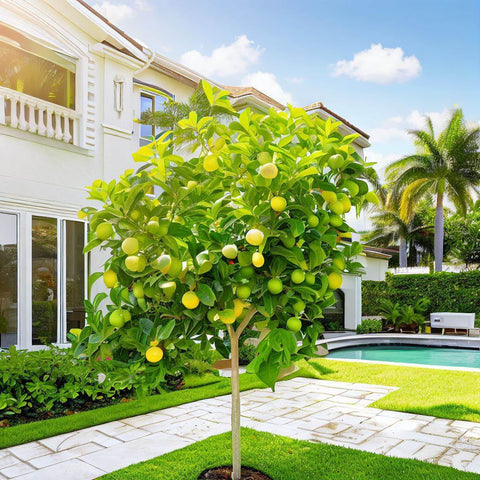


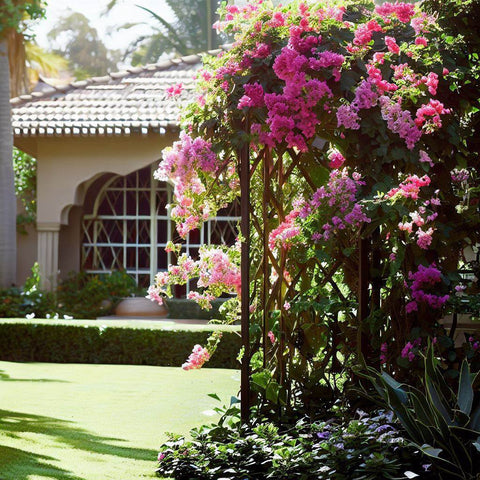
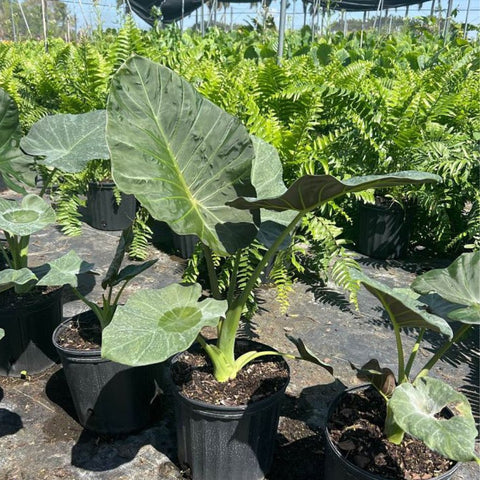
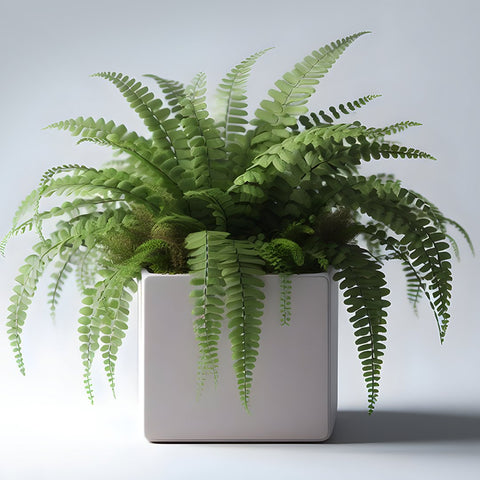
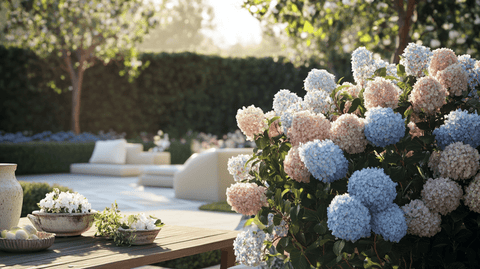
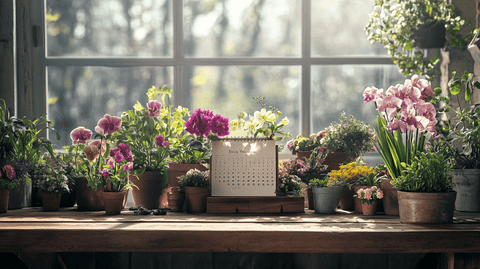









Comments (0)
There are no comments for this article. Be the first one to leave a message!